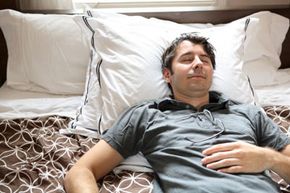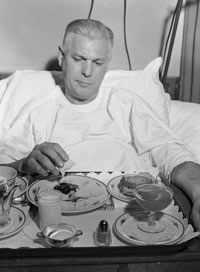Imagine awakening suddenly from sleep, gasping for air, coughing, wheezing and feeling like you're suffocating. Anxious and scared, you might quickly sit up and put your feet on the floor. Sitting or standing up helps you breathe better again. This frightening occurrence is a sign of heart failure -- and it sometimes happens to people who haven't had any previous symptoms of heart trouble.
The scientific term for this occurrence is paroxysmal nocturnal dyspnea. "Paroxysmal" means "sudden attacks that recur," "nocturnal" means "occurring at night" and "dyspnea" means "difficulty breathing" or "shortness of breath."
Advertisement
Paroxysmal nocturnal dyspnea is also sometimes called cardiac asthma because its signs and symptoms mimic those of asthma. This term is actually misleading -- the two conditions are very different. While asthma is a chronic condition caused by inflammation of the airways, which can lead to breathing difficulties, paroxysmal nocturnal dyspnea is a sign of heart failure.
Paroxysmal nocturnal dyspnea can be accompanied by swelling of the feet or ankles. It's caused by congestion (excessive or abnormal accumulation of blood) in the lungs, perhaps along with accumulation of excess fluid in the lungs (pulmonary edema), which occurs as a result of left-sided heart failure.
Some patients who experience paroxysmal nocturnal dyspnea also experience orthopnea: breathlessness when lying down that is relieved when several pillows raise the head and upper body. People with this condition must keep their heads elevated to breathe comfortably. Paroxysmal nocturnal dyspnea is an intense form of orthopnea. It commonly occurs several hours into sleep (as opposed to immediately upon lying down), and it's relieved by sitting upright, but not as quickly as is orthopnea.
Next, we'll learn what causes paroxysmal nocturnal dyspnea and how you can treat it.
Advertisement

